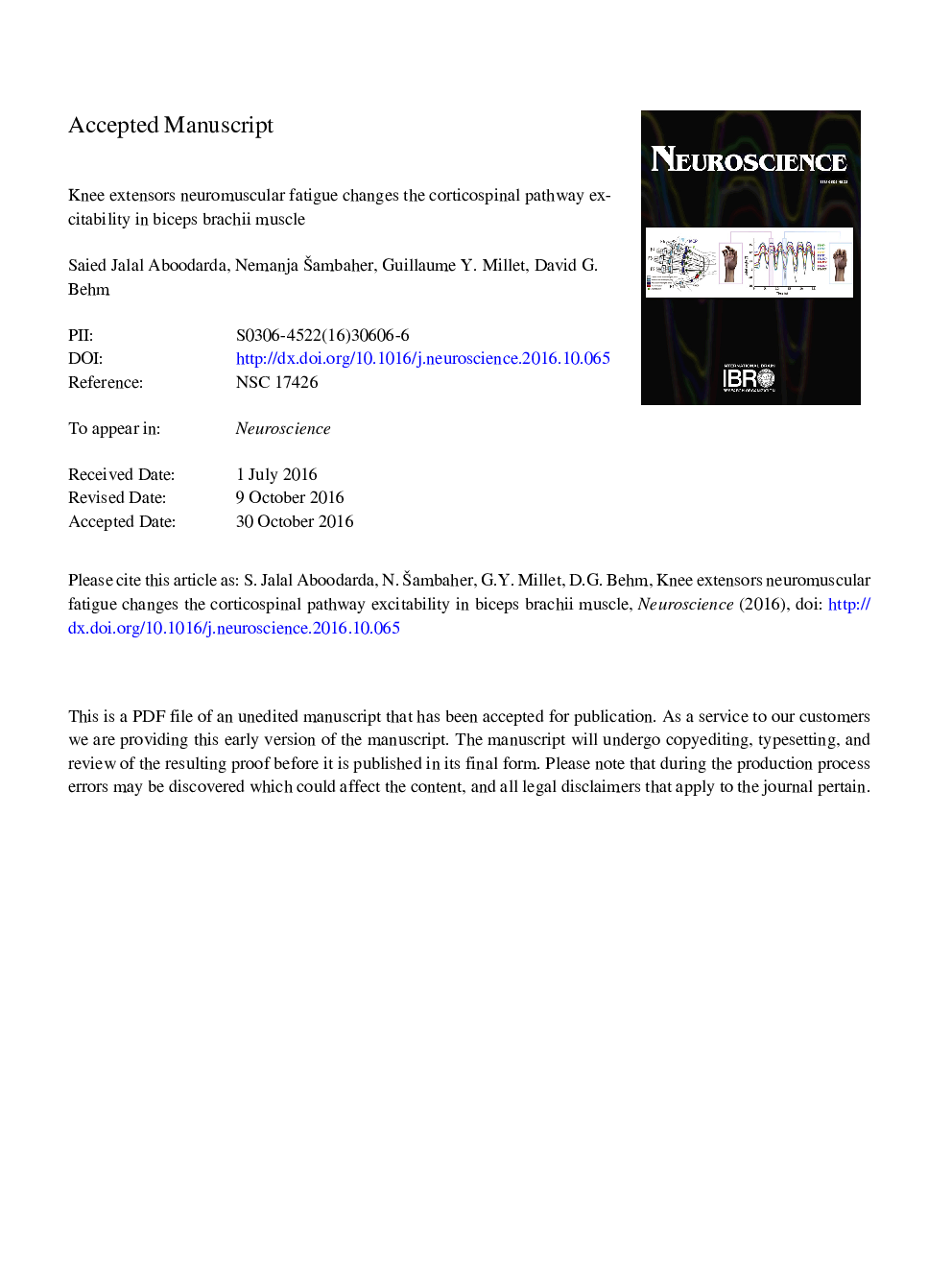| کد مقاله | کد نشریه | سال انتشار | مقاله انگلیسی | نسخه تمام متن |
|---|---|---|---|---|
| 5737565 | 1614736 | 2017 | 31 صفحه PDF | دانلود رایگان |
عنوان انگلیسی مقاله ISI
Knee extensors neuromuscular fatigue changes the corticospinal pathway excitability in biceps brachii muscle
ترجمه فارسی عنوان
خستگی عضلانی عضلات زانو باعث تحریک پذیری مسیر کورتیکوپسنال در عضلات شکمی
دانلود مقاله + سفارش ترجمه
دانلود مقاله ISI انگلیسی
رایگان برای ایرانیان
کلمات کلیدی
موضوعات مرتبط
علوم زیستی و بیوفناوری
علم عصب شناسی
علوم اعصاب (عمومی)
چکیده انگلیسی
Equivocal evidence indicates that high-intensity muscle contractions can affect the corticospinal responses in muscles not directly involved in the task. In the present study, the responsiveness of corticomotor pathway innervating non-dominant biceps brachii was measured in eleven healthy participants before and after: (i) two 100-s isometric unilateral knee extension maximal voluntary contractions (MVCs) on dominant leg (FATIGUE) and (ii) rest (CONTROL). Transcranial magnetic stimulation, transmastoid electrical and brachial plexus electrical stimulation were used to evoke motor evoked potential (MEP), cervicomedullary motor evoked potential (CMEP) and compound muscle action potential (Mmax) in biceps brachii muscle. The three stimuli were elicited at 2, 3.5 and 5 s while participants were performing 6-s elbow flexion contractions at 100, 50, and 5% of MVC interspersed with 10-s rest. The results demonstrated opposing behaviors of MEP responses at 100% (23% higher, p = 0.08) and 5% MVC (34% lower, p = 0.019) following FATIGUE compared to CONTROL. Similarly, MEP·CMEPâ1 ratio changes indicated that the supraspinal motor response was significantly higher during 100% (42%, p = 0.027) but lower during 5% MVC (28%, p = 0.009) following FATIGUE. Yet, the elbow flexor MVC force did not exhibit any difference between FATIGUE and CONTROL conditions. These results suggest that the upper limb muscles' corticomotor pathway responsiveness recorded during voluntary contractions were modulated by lower limbs fatiguing contractions and this modulation depends on the force produced during testing, i.e. level of central motor drive. However, these changes have little effect on upper limb muscle maximal performance.
ناشر
Database: Elsevier - ScienceDirect (ساینس دایرکت)
Journal: Neuroscience - Volume 340, 6 January 2017, Pages 477-486
Journal: Neuroscience - Volume 340, 6 January 2017, Pages 477-486
نویسندگان
Saied Jalal Aboodarda, Nemanja Å ambaher, Guillaume Y. Millet, David G. Behm,
